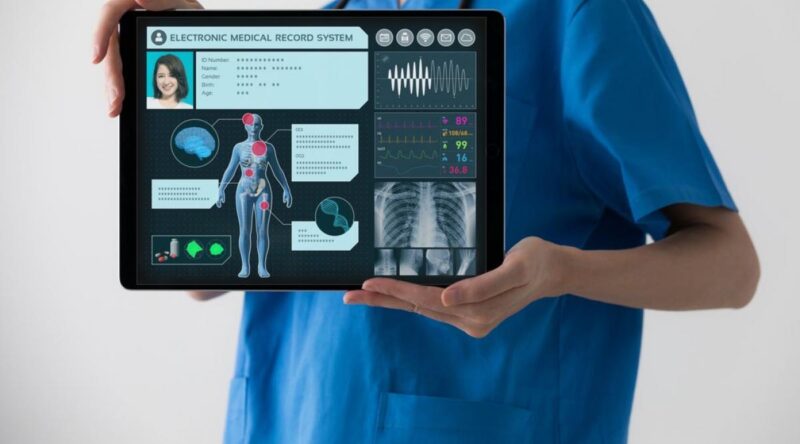Implementing advanced technology solutions in healthcare practices has become essential in enhancing patient care and improving operational efficiency. Among these technologies, Behavioral Health EHR software is increasingly significant for professionals managing mental and behavioral health services.
These tools offer specialized functions tailored to the unique challenges posed by this medical discipline. Below, we’ll explore the ins and outs of behavioral health EHR software and how it can transform your practice management. Keep reading to understand its impact, key features, integration strategies, and how to measure its success.
Understanding Behavioral Health EHR Software and Its Impact on Practice Management

In the realm of healthcare IT, behavioral health EHR serves as a pivotal management solution specifically designed for mental health professionals. By supporting the documentation of psychiatric evaluations, treatment planning, and patient progress notes, these systems contribute significantly to a more organized practice. The comprehensive nature of behavioral health EHR allows for an inclusive overview of patient records, streamlining administrative tasks and clinical operations alike.
Aside from clinical data management, behavioral health EHR is instrumental in practice management tasks such as scheduling, billing, and compliance with healthcare regulations. The sophistication of such systems lies in their ability to integrate these multiple functionalities into one seamless interface, reducing the risk of errors that can occur with manual data handling. Moreover, this integration positions practices to adapt more readily to changes in healthcare policies and patient needs.
The impact of robust behavioral health EHR extends to the quality of patient care. With quick access to patient history and treatment plans, therapists and counselors can make informed decisions swiftly. The ripple effect of this improved care is evident in patient engagement and satisfaction, as the process from scheduling to follow-up becomes more fluid for the client.
Strategies for Seamless Integration of Behavioral Health EHR Into Your Existing Workflow

Integrating new software into an existing workflow can be daunting. A strategic approach is to begin with a thorough assessment of your current processes and how they might be enhanced or reconfigured with the EHR system. Collaboration with your staff is essential to identify any potential roadblocks and to adapt the EHR functionality effectively to your practice’s operations.
It is also critical to partner with an EHR vendor that offers comprehensive support and training services. A vendor that understands the nuances of behavioral health will provide insight into best practices for implementation. Moreover, they will assist in customizing the system to match the nuanced needs of mental health service delivery.
Another strategy involves phasing the integration into manageable stages to minimize the disruption to your practice. You might start with patient record management before progressively adopting the scheduling, billing, and reporting functions. Such a phased approach also allows your team to gradually adapt to the new system.
Key Steps to Customize Behavioral Health EHR
Customization ensures that the EHR system meets the unique needs of your practice. Follow these key steps:
- Identify specific features required for clinical and administrative tasks.
- Work with the vendor to tailor templates for treatment plans and progress notes.
- Conduct pilot testing with a small team to refine workflows before full implementation.
- Establish a feedback loop to address usability concerns after deployment.
Overcoming Implementation Challenges ─ Training Staff and Ensuring Data Security

As with any significant change, implementing an EHR system presents its set of challenges. Comprehensive and continuous training programs are crucial for ensuring that all staff members are comfortable with the new system. Investing in your team’s education not only propels the successful adoption of the EHR but also boosts morale and competence in usage.
During and after the transition, vigilance over data security is indispensable. Behavioral health records are highly sensitive, and thus a robust EHR system must possess top-notch security features. It’s imperative to educate staff on security best practices, promote a culture of data privacy, and ensure that all legal standards for patient data protection are rigorously maintained.
Boosting Staff Engagement During EHR Rollout
Engaged staff are key to a smooth transition. To promote engagement:
- Involve staff early in the planning process.
- Schedule regular progress updates to keep everyone informed.
- Offer incentives for active participation in training sessions.
Measuring the Success of Integrated Behavioral Health EHR in Patient Outcomes and Practice Efficiency

Post-implementation, the true test of a behavioral health EHR system’s value is observed in its positive impact on patient outcomes and practice efficiency. Measuring success can take many forms, including reviewing metrics such as patient wait times, appointment no-show rates, billing cycles, and patient satisfaction scores. Improvement in these areas often indicates successful integration of an EHR system.
Moreover, examining the quality of clinical care through patient health outcomes is vital. An EHR system should facilitate better care coordination, resulting in improved patient management and ultimately, patient health. Tracking clinical outcomes, recovery rates, and other health indicators provides insight into the effectiveness of the EHR system in supporting therapeutic interventions.
Long-Term Benefits of Behavioral Health EHR
The advantages extend beyond immediate efficiency gains.
- Enhanced scalability allows practices to grow without overhauling systems.
- Automated reporting simplifies compliance with evolving regulations.
- Improved patient communication fosters stronger therapeutic relationships.
Enhancing Patient Communication Through EHR Systems
Behavioral health EHR systems play a vital role in improving patient communication. By offering secure patient portals, these systems enable clients to access their records, appointment schedules, and treatment plans conveniently. This transparency fosters trust and ensures that patients remain actively engaged in their care journey.
Conclusion
Overall, the integration of an effective behavioral health EHR system into your practice has the potential to revolutionize patient care and enhance your practice’s management. By carefully selecting the right system, preparing for a strategic integration, training staff adequately, and meticulously measuring outcomes, your practice stands to benefit significantly.
Just as importantly, patients will receive higher quality, more coordinated, and efficient care, resulting in better health outcomes and greater satisfaction with their mental health services.
Related Posts:
- How to Expand Your Legal Practice Without Losing…
- The Benefits of Hiring Healthcare Consulting…
- 5 Accessories to Transform Your Mercedes Sprinter…
- Turn Your Gaming Hobby into Income - How to Get Started?
- How to Transition Into Auckland's Tech Industry: A…
- 5 Valid Reasons to Put Money into a Home Security System








